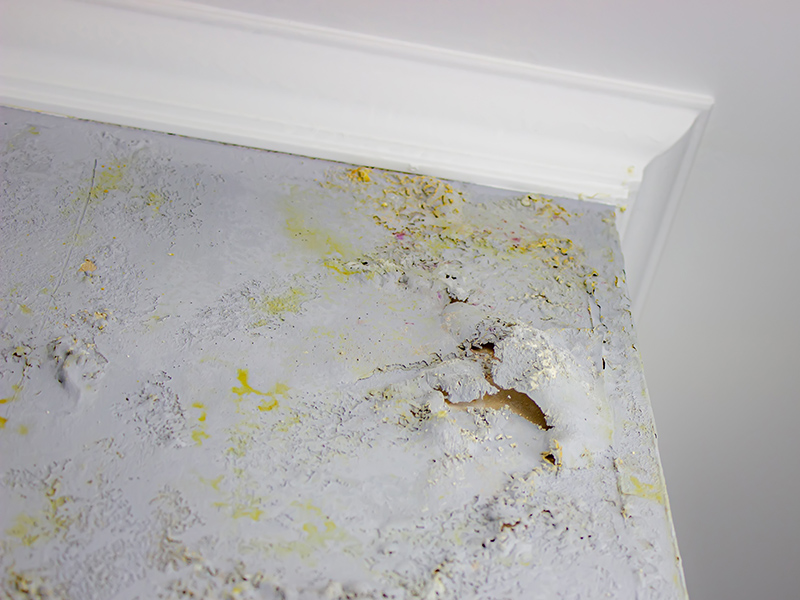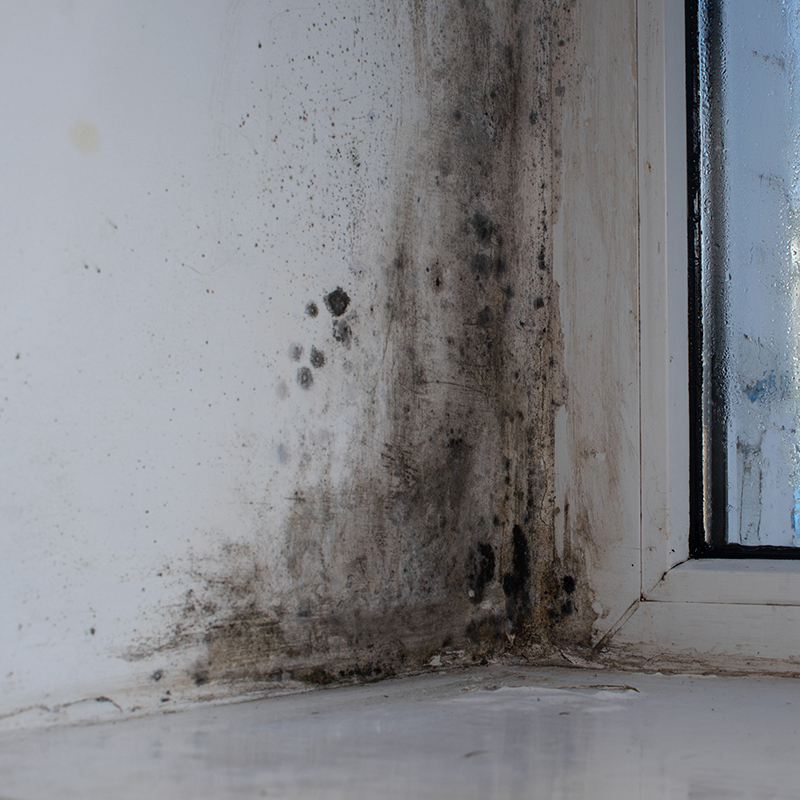FAR-UV 222nm SOLUTIONS FOR DAMP CONTROL AND MOULD REMEDIATION
Creating healthier indoor environments by utilising Far-UVC
A better way to control damp
Dampness in buildings can lead to a range of problems, including mould growth, structural damage, and health issues. Traditional methods of damp control can be time-consuming and may not always be effective. Far-UVC technology offers a powerful solution for addressing dampness and its associated problems.

Dampness in buildings creates an environment conducive to the growth of numerous pathogens, including moulds, bacteria, and fungi. These organisms can pose significant health risks. Key pathogens associated with damp conditions include:
Moulds & Fungi
Aspergillus spp.: This common mould genus is frequently found in damp indoor environments and can release spores into the air, potentially triggering respiratory issues and allergic reactions in susceptible individuals. Exposure to elevated levels of Aspergillus spp. spores can exacerbate pre-existing respiratory conditions.
Penicillium spp.: Often prevalent in damp areas, moulds belonging to the Penicillium genus can also release spores that contribute to indoor air quality issues. These spores can trigger allergic reactions and respiratory problems in sensitive individuals, similar to Aspergillus spp.
Stachybotrys chartarum (Black Mould): Commonly known as black mould, Stachybotrys chartarum thrives in persistently damp environments. Exposure to this mould has been associated with more serious health effects, particularly in immunocompromised individuals, highlighting the importance of effective damp control and mold remediation strategies.
Cladosporium spp.: This mold genus is commonly found both indoors and outdoors. While generally considered less toxic than some other moulds, Cladosporium spp. can still release spores that contribute to respiratory symptoms, especially in individuals with allergies or asthma.
Bacteria
Legionella spp.: This bacterial genus is commonly found in water systems, including cooling towers, hot water tanks, and plumbing systems. Inhalation of aerosolised water contaminated with Legionella spp. can cause Legionnaires’ disease, a severe form of pneumonia, posing a significant health risk, particularly in building environments.
Mycobacterium spp.: Certain species within the Mycobacterium genus can thrive in damp environments and are associated with various health concerns, including lung infections. Exposure to these bacteria in damp indoor spaces can present a health risk, especially for individuals with compromised immune systems.
Pseudomonas aeruginosa: This ubiquitous bacterium is frequently found in wet environments, including stagnant water and damp surfaces. Pseudomonas aeruginosa can cause a range of infections, particularly in individuals with weakened immune systems or underlying health conditions, making its presence in damp environments a concern for public health.
Viruses
While viruses do not typically proliferate in damp conditions to the same extent as moulds and bacteria, moisture can significantly prolong their survival on surfaces. Certain respiratory viruses, in particular, exhibit extended viability in humid environments, increasing the potential for transmission.

Deactivating and Eradicating Black Mould
Black mould is a common problem in damp buildings. It can cause respiratory issues, allergies, and other health problems. Far-UVC technology can be used to effectively deactivate and eradicate black mould, improving indoor air quality and reducing the risk of health problems.
- Mould spore inactivation: Far-UVC can inactivate mould spores, preventing them from germinating and spreading.
- Mould colony eradication: Far-UVC can also be used to eradicate existing mould colonies, removing the source of the problem.
Reducing Unpleasant Odours
Dampness often leads to unpleasant odours caused by mold and mildew. Far-UVC can help reduce these odours by eliminating the microorganisms that produce them.
- Odour reduction: Far-UVC can be used to reduce unpleasant odours associated with dampness and mould growth.
- Improved air quality: By eliminating odour-causing microorganisms, Far-UVC can help improve the overall air quality in damp buildings.


Benefits of Far-UVC for Damp Control
- Effective mould remediation: Far-UVC can effectively deactivate and eradicate black mould.
- Improved indoor air quality: By reducing mould and odours, Far-UVC can improve the health and well-being of building occupants.
- Long-term benefits: Far-UVC can provide long-term benefits by preventing future mould growth and dampness issues.
- Environmentally friendly: Far-UVC is a chemical-free solution that is safe for both humans and the environment.
- Reduced risk: Far-UVC reduces the need to use chemicals and reduces risk to occupiers.
In summary
Far-UVC technology offers a powerful tool for addressing dampness and its associated problems in buildings. By effectively deactivating and eradicating black mould and reducing unpleasant odours, Far-UVC can help create healthier and more comfortable indoor environments.
FAQs
Any further questions?
Our expert team are on hand to answer any questions about our Far-UVC solutions and how they could be best integrated within your business set up.

Registered Office: Unit 6, Old School House, School Street, Pontyclun, CF72 9FF, Wales, United Kingdom
Operational Sites: Wales, West Country & East Anglia
Company Number: 13791266
D-U-N-S Number: 228512382
VAT Number: GB 448730277